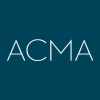Resume Writing and Editing Tips for Pharma Sales Professionals

As a Professional Pharmaceutical Recruiter, I read and evaluate resumes (as well as CVs), every day. While I am not a professional resume writer, I have a very strong understanding of what a good resume or CV looks like and what should be included. More importantly, I keep track of what is most effective and elicits the best response from potential employers. I am happy to share some essential resume writing and editing tips that may be helpful to prepare for your next job search.
Brand Yourself
First, your resume should reflect your brand or specific focus. Be clear about your image and what you want to portray. Make sure that all of the information you include on your resume will work towards a unified and consistent image. Showcase your brand through clear and descriptive content and titles that justify your fit for the role or roles you seek.
Templates and Formatting
Style, formatting and appearance are key to the overall impression of your resume. Start by choosing a professional template that will work well for your background and industry. It is a good idea to ask a friend, colleague or coworker if they are willing to share their resume with you to review. Ultimately, make sure you are comfortable with the template you use to work from and be sure it offers the impression you want. Make sure that your fonts are big enough. Do not go smaller than an 11-point font, and opt for 12-point if possible. Times New Roman, Arial and Garamond are all good font choices. Do not overuse capital letters or underlines. Titles should be bolded, and there should be white space to show clarity, enhance the visual/aesthetic appeal and make content flow.
Professional Summary
Include a “Professional Summary” at the top of your CV that tells the reader who you are and what you are looking to do. This is basically a more formal and professionally documented elevator pitch. Your professional summary will be the first impression for the reader, so make sure it is precisely written. Example: A performance-driven sales professional with over fifteen years of combined experience in healthcare, clinical research, and sales, developing in-depth and productive relationships with key professionals in academic, clinical, and payor organizations to optimize business opportunities. Acknowledged for strong presentation, communication, and organizational skills to successfully direct complex projects among many levels of internal and external customers in multiple therapeutic areas, including Cardiovascular, Metabolic and Nephrology. Currently seeking a pharma sales role with a growing company.
TIP: Be sure that you write the summary in third person, and do not write in first person – it reads as less professional.
The Header and Contact Information
It is important to have your contact information displayed prominently. Use the header option and make your name bold with a larger font than the rest of the text. Add your credentials after your name so that they are highlighted prominently, such as Jane Doe, BA, PRC or John Doe, BS, PRC. If you are a certified pharmaceutical sales representative, be sure to add it, especially if you were certified from an accredited organization like the Accreditation Council for Medical Affairs (ACMA). They offer the Pharmaceutical Representative Certification (PRC). That will absolutely show you’ve gone above and beyond and are committed to the pharma sales rep career. Make sure that your contact details are clearly listed. If you prefer not to list an address, leave it off. But you should at least list a base city so that potential employers know where you are commuting from. Or if you are field-based, such as a pharma sales representative, an employer will want to know what territory you are a potential fit for.
TIP: Review job descriptions and similar job postings to see which common keywords are being used by prospective employers.
Use “Keywords”
As you edit your resume, think about which keywords a recruiter might use to find someone with your specific background. The digital age of recruiting is upon us, which means that all applicant tracking systems and recruitment websites have “search” functionality and even artificial intelligence capabilities. As a result, corporate recruiters will run search queries based on specific keywords. If your resume does not have the required keywords relating to the job you are applying for, your information might never be found. Keywords can be job titles and descriptive words that relate to your job function.
Resume Length
Many professional resume writers and career coaches will insist that your resume is no longer than 2 pages. In my opinion, years of experience will dictate the appropriate length of a resume. While the one- to two-page resume is most common for entry- to mid-level job seekers, the executive resume will warrant more pages (depending on job function). We recommend including publications, presentations, abstracts, journal articles, editorial tasks and reviews, awards, grant support, etc. All should be added at the end, letting the reader decide how much information needs to be reviewed. As a result, it is very important to make sure your first 2 to 3 pages capture the most relevant highlights of your career and experience.
Highlight Tenure
If you have worked a long time for the same company (8-10 years or more), highlight this tenure clearly to show how long you worked for that employer. It is smart to then list all the different positions and roles separately that you had during this time at that employer. This may result in having several sets of time frames listed for each title. But remember to first list the overall time frame which shows your total years at that company.
Avoid “I” and “Me”
Your resume should not contain the pronouns “I” or “Me.” That is part of our normal sentence structure, but since your resume is a document about your person, using the pronouns ‘I” and “Me” is redundant.
Do Not Include
Do NOT include irrelevant information such as political affiliation, religion, age, hobbies and sexual preference. It is not a good idea to include a color background, colorful fonts or sections, a photo, or special graphics, such as a large monogram, logo or initial. Additionally, it is not necessary to mention comments like “Available to Interview” or “Can Start Immediately.” Although it is very common, the statement “References Available Upon Request” can be left off as well. Employers will ask for references at the proper time regardless of whether they are offered via the resume.
Be Truthful
You should only document what you can genuinely support. Even the slightest information that cannot be supported could potentially ruin your chances for employment. It is acceptable to have several versions of your resume for different employers and/or roles, especially if you are looking for career transition. Just be sure you can support all the claims you make and resist the urge to stretch the truth, since you may be “fact-checked” in an interview setting.
Multiple Versions
It is a smart practice to customize your resume for each employer and/or role you are applying for. When actively applying, it can be a good idea to have multiple versions of your resume prepared so that you can highlight your background and skills for that specific role. However, it is not smart to tailor your resume to “be” someone else. Employers will pick up on what you can truly support and what you are fabricating. Just keep track of which version you use for which opportunity.
Spell Check and Proofread
Be sure your resume is completely free of all errors and typos. Using spell check tools and thoroughly proofreading your document is mandatory. It is a good idea to share your resume with at least 3 trusted colleagues or family members that can proofread on your behalf. This seems like a no-brainer and should go without saying; however, I am often surprised at how many spelling errors and typos we find.
LinkedIn Profile
Once your resume is complete and you are fully comfortable with the final version, be sure to update your LinkedIn Profile so that it is a mirror image of your resume. Keep in mind that most recruiters and employers will cross reference your LinkedIn Profile once they have possession of your resume, so it is critical that both are a match. Your LinkedIn Profile is your digital brand and career image, so it is very important that you are consistent and 100% comfortable with the final version. Take the time to add a professional and recent photo. A casual, recreational or outdated photo is never perceived well; a lack of picture is not appropriate either. Lastly, consider adding your LinkedIn Profile link to the contact area of your resume.
E-Mail Cover
It is very likely that you will be emailing your resume to many companies or recruiters for consideration. Instead of having a cover letter as an attachment, consider incorporating a strong email intro to act as a brief cover letter and resume highlights. This will mean your e-mail will only have one attachment (your resume) which will ensure the reader will not have to open more than one document. To be safe, you can also include the full resume in the body of your email (under the intro) in case the attachment is blocked by a spam filter.
Bi-Annual Updates
It is a very good practice to revisit your resume and LinkedIn Profile every 6 months, or at least once per year, to make sure you are staying up to date. It becomes very challenging to make the proper and most relevant updates after many years. Revisions and updates should include new responsibilities, achievements, training, promotions, special projects or milestones, including publications, presentations, abstracts, journal articles, editorial tasks and reviews, awards, etc.
Similar Blogs

Career Development
How to Become a Pharmaceutical Sales Representative
Pharmaceutical sales representatives (often times referred to as pharma reps) are hired by pharmaceutical/biotech companies to edu...

Pharma Sales
Jan 11, 2021

Career Development
How to Ace the Pharmaceutical Sales Rep Interview
Unlock the secrets to acing your pharma sales interview. Learn essential strategies like deep company research, perfecting key que...

Pharma Sales
Jan 8, 2021

Career Development
4 Steps to Becoming a Pharmaceutical Sales Rep
Unlock the secrets to acing your pharma sales interview. Learn essential strategies like deep company research, perfecting key que...

Pharma Sales
Jan 6, 2021
